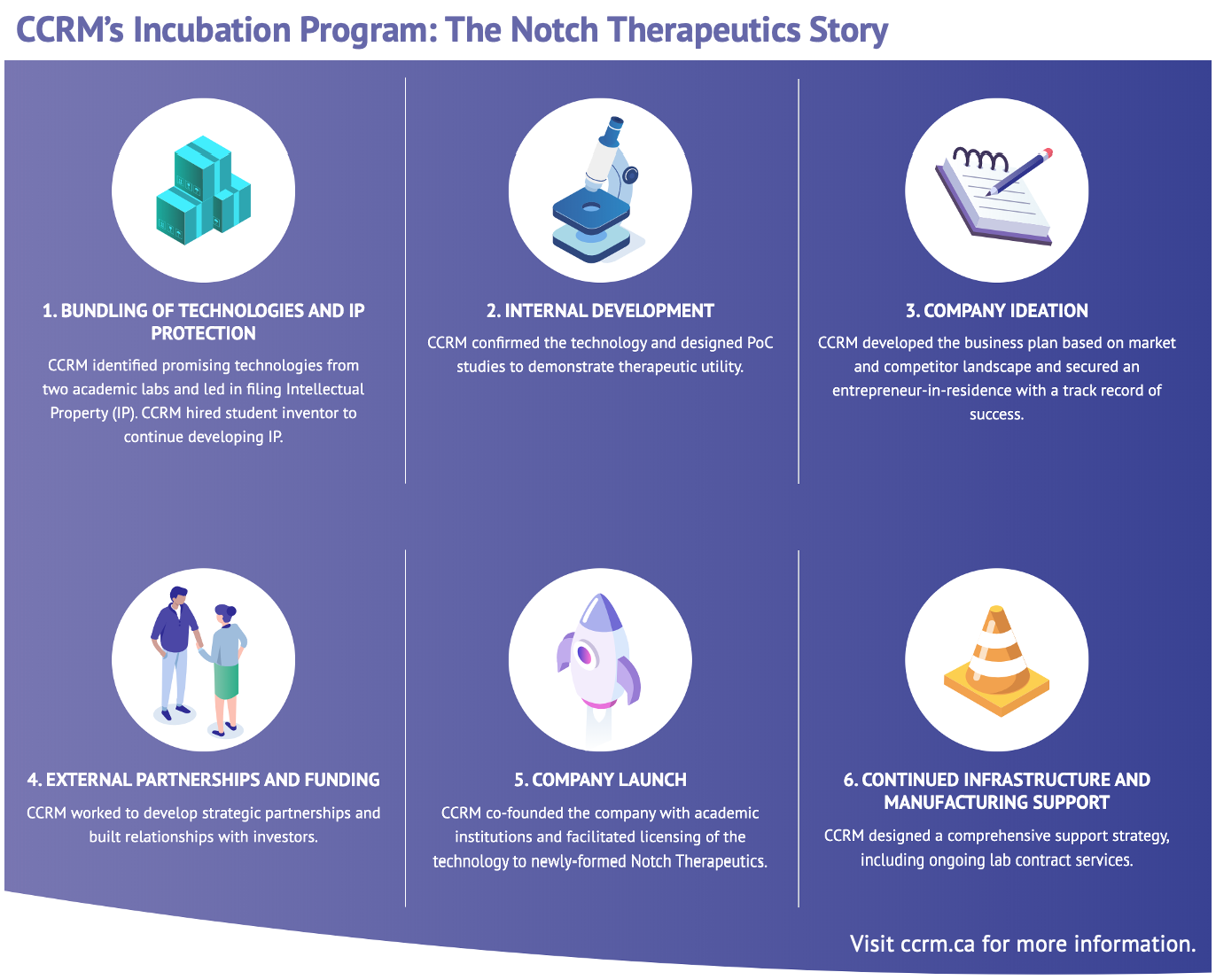Canada is a country that prides itself on “punching above its weight.” We use this metaphor all the time to describe how we succeed in given situations despite our limitations. Although it’s a cliché, it remains a point of pride for Canadians.
For example, in the regenerative medicine field in Canada we excel at punching above our weight. Despite our small population, we are leaders in the science and boast world-class researchers. With very few exceptions, Canadian companies and organizations don’t have huge pots of money to do ambitious projects, so we often leverage and collaborate to achieve our goals.
That’s a philosophy Michael May, President and CEO of CCRM, has been expressing for many years. His view is that if you’re good at collaborating and partnering, you can drive change faster. “All of a sudden, one plus one equals three. It’s synergy, and it makes all the difference. That’s the future of regenerative medicine and it’s the underlying strategy of how we work at CCRM.” (RegMedNet)
Toronto Innovation Acceleration Partners, or TIAP, is also enthusiastic about collaborating to get things done. TIAP’s network is built on collaboration through its membership with academic research institutions and hospitals. As evidenced by its portfolio, every company that TIAP has created has come into being through close cooperation between researcher, industry partner investor, and other organizations in the life sciences ecosystem.
CCRM and TIAP received seed funding from the Government of Canada’s Networks of Centres of Excellence (NCE) program, an initiative “to mobilize Canada’s research talent in the academic, private and public sectors, and apply it to the task of developing the economy and improving the quality of life of Canadians.” When the NCE launched 30 years ago, it understood that Canada’s (relatively) small research community needed to work together rather than compete. Annual meetings, with themes such as “Delivering impacts by leveraging Canada’s strengths through powerful partnerships” are testament to this. And it permeates the operating models of the organizations it funded. Another federal program, the Federal Economic Development Agency for Southern Ontario, also encourages close cooperation when granting funding, and CCRM and TIAP have both been recipients.
TIAP and CCRM have been partners since Day 1. Their CEOs were even members of each other’s boards. And with complementary mandates – CCRM focuses on regenerative medicine from across Canada, while TIAP specializes in early-stage health science technologies from its Toronto members – they had the opportunity to be creative about finding ways to leverage each other’s strengths.
Many of Canada’s regenerative medicine-based discoveries come from Toronto institutions. CCRM and TIAP jointly evaluate any regenerative medicine technology opportunities to determine the path forward to commercialization. Both organizations want to see promising Canadian intellectual property (IP) get commercialized to build Canada’s ecosystem.
“Company building is a team sport. It is a skill to draw on the best and most relevant expertise to form a cohesive partnership that will bring any given technology to market in the most optimal way. Partnering with like-minded organizations with complementary expertise offers a faster track and optimal use of resources,” says Parimal Nathwani, President and CEO of TIAP.
Canadian success story
One of the success stories arising from the CCRM and TIAP collaboration is Notch Therapeutics. Notch Therapeutics is an immune cell therapy company developing universal, off-the-shelf T cell therapies derived from renewable stem cell sources. The company launched in November 2019 and immediately announced a significant collaboration and license agreement with Allogene Therapeutics to research and develop induced pluripotent stem cell (iPSC) AlloCARTM therapy products for oncology. This week, Notch announced a Series A financing of US$85M – one of the largest in the history of Canadian biotech.
Notch Therapeutics combines IP from projects that began 10 years ago in the labs of Drs. Juan Carlos Zúñiga-Pflücker, of Sunnybrook Research Institute, and Peter Zandstra, at the University of Toronto. In addition to support from TIAP and CCRM, Lumira Ventures came on board as an additional investor.
As it happened, CCRM and TIAP were in the very early stages of assessing aspects of the same technology. A decision was made to bundle the technologies and combine forces – and this is what ultimately led to Notch. Before Notch was fully formed, TIAP developed the business case and the IP strategy, and Notch had the advantage of going through CCRM’s internal incubation process, as illustrated below.
This program, with its singular focus on regenerative medicine-based technologies and cell and gene therapies, is unique in Canada and improves a start-up’s chances of long-term success. You can read more about CCRM’s five-step incubation program here.
Notch Therapeutics is based in Toronto, Ontario, and Vancouver, British Columbia. This means its IP is staying in Canada and talent is remaining in the country and being attracted here – a significant positive outcome of the time and funding that has been invested in building this company, and crucial for Canada as it builds its innovation economy.
Speaking of talent, the company launched with key personnel who were trained at TIAP and CCRM, and were heavily invested in seeing it succeed. They were involved with developing the technology during the incubation process and turning the concept into a company. These champions were enthusiastic about moving to Notch Therapeutics full-time.
While there are still some organizations receiving NCE funding, the NCE morphed into a new program in 2018. (Read “Goodbye NCE, hello New Frontiers in Research Fund.”)
Its impressive legacy lives on in companies like Notch Therapeutics, and organizations like the Stem Cell Network, CellCAN, BioCanRx, C3i, IRICoR, adMare BioInnovations, TIAP, CCRM and others that will continue to collaborate, partner and leverage expertise so that Canada can have a thriving life sciences ecosystem and we can keep punching above our weight.
Stacey Johnson
Latest posts by Stacey Johnson (see all)
- Right Turn: Stem cell supplements: A growing market with growing risks - December 19, 2025
- Right Turn: Beyond the ’stache: The science, the progress, the promise - November 26, 2025
- Right Turn: Can Bryan Johnson live forever? Will regenerative medicine help him do so? - October 10, 2025








Comments